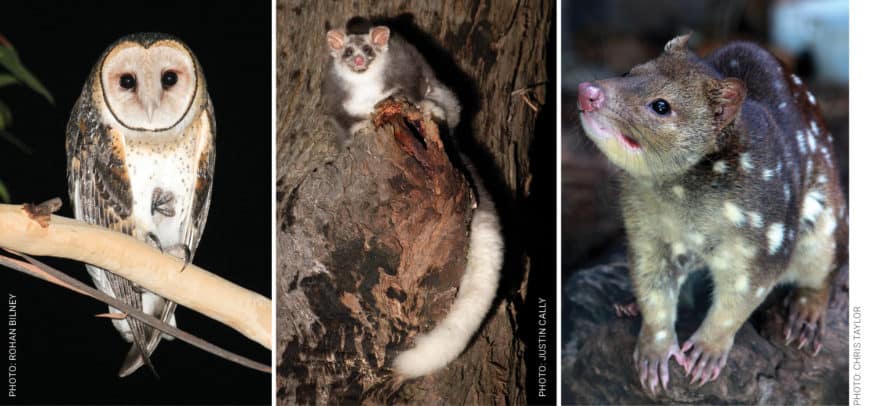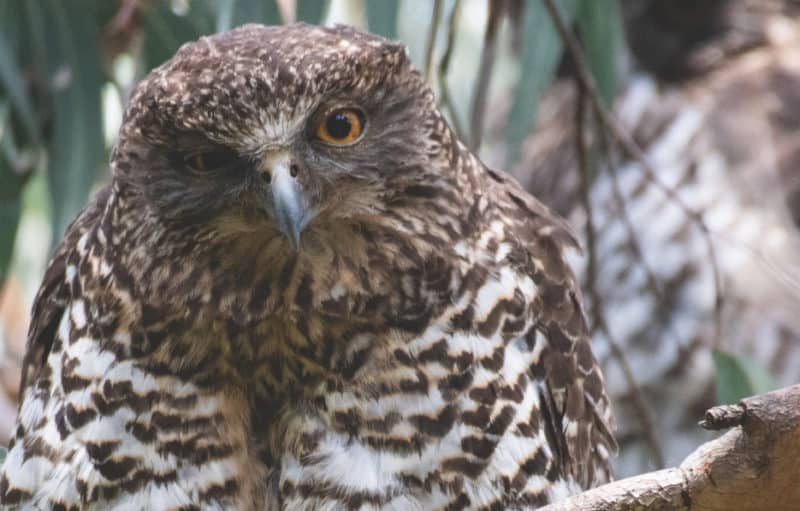PARK WATCH March 2021 |
We must protect our forest refuges. By Jordan Crook and Matt Ruchel.
In a year where the word ‘unprecedented’ was overused to the point of losing meaning, the 2019-20 Black Summer bushfires along the east coast of Australia had, and continue to have, an unprecedented impact on our wildlife and ecosystems due to their scale and severity.
VNPA, along with community conservation groups from East Gippsland, commissioned an analysis of the impact of the bushfires on a range of threatened plant and animal species in Eastern Victoria – and the impact of ongoing logging on remaining forest spared from the flames.
What the analysis found was both shocking and deeply disappointing. At a time when not just Australians but the whole world was concerned about the future of our unique and special wildlife, the Victorian Government has allowed its state-owned logging company, VicForests, to log unburnt areas and areas recovering from the bushfires.
Significant unburnt areas – critical refuge areas for threatened and endangered wildlife – are under imminent threat from logging.
The impact of the bushfires
The 2019-20 bushfires burnt more than 1.25 million hectares of forest across eastern Victoria, killing millions of animals, threatening the survival of hundreds of species, and pushing many ecosystems to the brink of collapse.
Bushfire severity mapping shows that more than half the area in the fire extent experienced moderate to high fire severity. ‘Moderate severity’ is defined as having 20–80 per cent canopy scorch, and ‘high severity’ has greater than 80 per cent canopy scorch.
More than 200 flora species have had 50–100 per cent of their extent affected by the fires, of which 154 have been identified by the Department of Environment, Land, Water and Planning (DELWP) as of high concern due to fire impacts.
DELWP has also identified 67 fauna species of most concern, of which 20 had 50–80 per cent of their entire habitat burnt.
Our report
Our recently released joint report After the Fires: Protecting Our Forest Refuges focuses on ten forest areas including Errinundra, Cottonwood, Cabbage Tree, Far East Gippsland, Swifts Creek, Nunniong, Colquhoun, Mt Alfred, Sardine Creek to Bemm, and the North-East Alpine Region.
Many of these unburnt and lightly burnt refuge areas contain extremely valuable and rich habitat features essential for the rehabilitation, recruitment and dispersal of wildlife into recovering forests.
The key refuge areas were selected after extensive analysis of bushfire extent and severity spatial data, and Habitat Importance Models (HIMs) data, and verified state government records of key fauna species. This data shows where the most important modelled habitat is for each species. The in-depth knowledge of local conservationists and citizen science also played a vital part in the writing of the report as on-ground survey work was difficult to conduct in 2020.
The report highlights how these refuges will be key for the survival of many iconic East Gippsland locals such as the Long-Footed Potoroo, Glossy Black Cockatoo, Greater Glider, Spot-tailed Quoll, Masked and Sooty Owls, Lace Monitor, Giant Burrowing Frog.

We found that across the ten refuge areas identified, 553 logging coupes covering over 20,000 hectares of forest are planned for logging in the coming months to years by VicForests.
Not only have there been no reductions or substantive changes to existing logging plans since the bushfires, two additional logging schedules have been approved by state-owned VicForests in the last 12 months.
The impact of logging
The science on the impact of logging native forest on threatened and endangered wildlife is solid – and is damning.
For most of the bushfire-affected threatened species focused on in our report, logging is listed as a major threat to their already precarious survival. Many species experienced significant range contractions before the fires, making the small fragments of forest that escaped the 2019-20 bushfires even more critical to conserve.
After the 2019-20 bushfires, DELWP released two reports on the impacts of the fires, which identified the importance of protecting key refuge areas for fire-affected species.
Scientists from the Threatened Species Recovery Hub made recommendations in January 2020 to locate and protect key refuge areas that “will be of profound importance for species’ recovery, and hence should be the immediate and ongoing focus for conservation management.”
In May 2020, the Office of the Conservation Regulator made recommendations that logging stop in key unburnt habitat for threatened species to halt the threat of irreversible damage to biodiversity after the 2019-20 bushfires.
Despite these ongoing warnings and recommendations, logging has recommenced in the refuge areas outlined in the After the Fires report as well as other high-conservation value areas since the fires.
Our recommendations
The After the Fires report makes the following recommendations:
- Protect each of the key refuges identified in the report and any other remaining unburnt forests from current and future logging, to ensure the survival and persistence of flora and fauna species that rely on these forests to survive.
- Commit to not logging any identified habitat remaining in Victoria for each threatened species significantly affected by the 2019-20 bushfires, particularly those species listed in the report.
- Bring forward the 2030 transition out of native forest logging. In November 2019 the Victorian government committed to a decade-long transition out of native forest logging. Doing so sooner would avoid further damage.
- Prioritise funding and restoration of areas impacted by the bushfires to restore habitat and provide better resources for weed and pest control programs in forest areas to improve recovery from bushfire events.
- Declare and map the key refuges identified in this report as high priority assets in need of protection from all types of future fires, including planned burns.
The Victorian Government must take this immediate, decisive action to stop the ongoing logging of these critical wildlife refuges and protect the threatened plants and animals who depend on them for survival.
Our forests need you
Will you help protect what’s left by making a kind donation today?
Did you like reading this article? Want to be kept up to date about this and other nature issues in Victoria? Subscribe to our email updates.
You can also receive our print magazine Park Watch four times a year by becoming a member. Find out more here.
